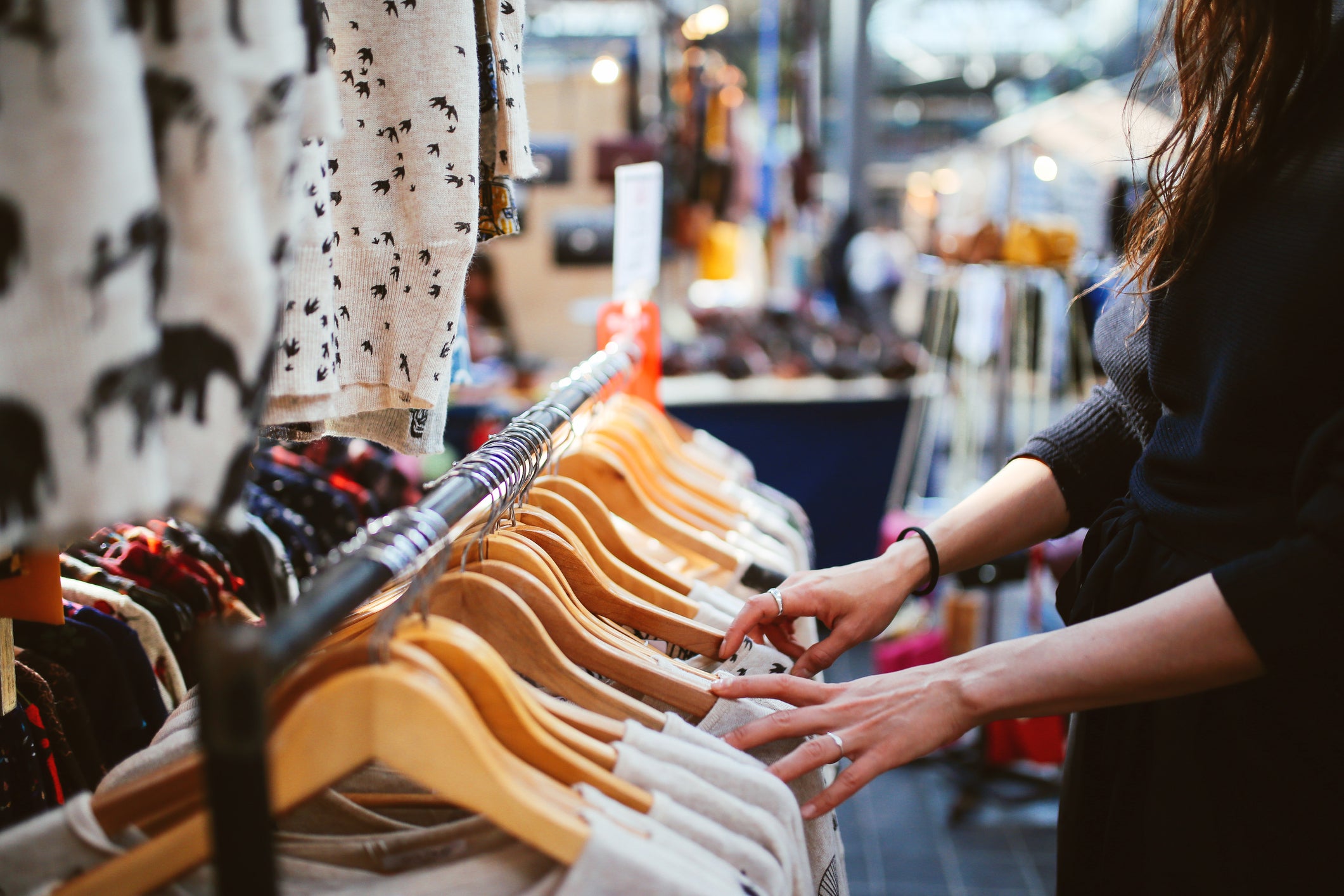Is clothing rental the secret to making fashion sustainable?
One rubbish truck of textiles is thrown away every second. An industry for borrowing clothes could help us move towards a circular economy

A staggering 235 million items of unwanted clothing were expected to be dumped in UK landfill in 2017 and the average American is estimated to bin 81lb (37kg) of used clothing annually. Overconsumption and the inevitable disposal of unwanted clothing has become a worrying global problem and, in many cases, clothing is unnecessarily binned when it could be repaired or recycled.
Filling landfill with clothing and textiles costs the UK alone an estimated £82m every year. On the flip side, the consumption of clothing is hugely important to the economies of many countries. Research from The British Fashion Council, for example, found fashion contributes £28bn to the UK economy – globally it is a $2.4 trillion (£1.9 trillion) industry.
Despite this, materialistic values and a widespread desire for new things, twinned with fashion’s raison d’etre to create – and sell – different styles, has reduced the functional value of clothing, making it easily disposable. A staggering 100 billion items of clothing are being produced annually, and 50 per cent of fast fashion pieces are disposed of within a year.
In fact recent figures show one rubbish truck of textiles is thrown away every second, globally. Little wonder then, fashion has been dubbed “incredibly wasteful” – even by insiders.
The problem with fashion
Fashion and sustainability have historically had an uncomfortable relationship. The 2013 Rana Plaza disaster in Bangladesh, along with growing concerns over sweatshop labour, have seen fashion companies overhaul social and environmental impacts. Consumers, meanwhile, have grown increasingly concerned about where and how garments are made. But while fashion makes strides to become ethical, there are still serious concerns over its environmental impact and contribution to climate change.
Fashion is deemed one of the world’s most polluting industries – from toxic chemical use to water pollution and waste. Some 35 per cent of the global total of microfibres in the oceans comes from clothing and textiles. By 2050 it is anticipated the fashion industry will use up 25 per cent of the world’s carbon budget.
What’s the solution? A circular economy seeks to move beyond fashion’s linear model of take, make and waste to close the loop, designing out waste and minimising environmental impacts. While brands work to limit polluting practices through the creation of organic, environmentally conscious collections, there is still a need to limit the sheer volume of waste fashion creates.
Recycling has become an important initiative. H&M, for example, has a successful garment collection scheme, repurposing consumers’ unwanted clothing. Other brands are using recycled materials in clothing, with outdoors retailer Patagonia making polyester fleece out of recycled plastic bottles.
While recycling could achieve circularity by designing out waste, it is still problematic environmentally. Recycling is energy intensive and may require the use of further virgin materials. Additionally, while it resolves some of fashion’s sustainability issues, it does not adequately address the problem that consumers buy too much, and that the average number of times a garment is worn has declined by 36 per cent since 2000. We must reconsider how fashion is sold, encourage consumers to waste less, and ensure garments have a longer lifespan.
Are rentals the future?
WRAP, the UK’s resource efficiency agency, has identified leasing as an innovative business model that gives clothes a longer service life while reducing material use and carbon dioxide emissions. A recent survey by the Westfield Shopping Centre in London suggested clothing rental would become a key future trend.
The potential value of the clothing rental market in the UK has been estimated at £923m, and the model is already well established for certain items, such as dinner jackets and wedding suits for men. Despite this, there are just a handful of fashion companies that have adopted leasing. At Mud Jeans, for example, consumers can lease a pair of organic jeans and, after a year can keep, swap or return them. Girl Meets Dress, meanwhile, was founded in the UK in 2009, with the ethos that in a sharing economy ownership will become obsolete.
In America, Rent the Runway has become a significant fashion player. These companies are built on change, but undoubtedly will face the challenges of the traditional sales driven fashion system, along with consumer hesitancy.
Our research has explored the potential for clothing rental among consumers. While we found there were opportunities, certainly at the luxury end of the market, there was resistance to the rental of lower priced items, which were just too easy to buy.
If consumers are to engage, rentals need to be convenient, cheap and accessible and fulfil the desire for having something new. Consumers are open to change, and leasing could help achieve a more circular fashion industry. However there are issues to consider, from transportation to dry cleaning impacts. Clothing rental has the potential to reduce waste and extend the lifespan of garments, but to achieve a more sustainable industry a systemic change in business practice and consumer behaviour is needed.
Naomi Braithwaite is a senior lecturer in fashion marketing and branding at Nottingham Trent University. This article first appeared on The Conversation (theconversation.com)
Subscribe to Independent Premium to bookmark this article
Want to bookmark your favourite articles and stories to read or reference later? Start your Independent Premium subscription today.

Join our commenting forum
Join thought-provoking conversations, follow other Independent readers and see their replies